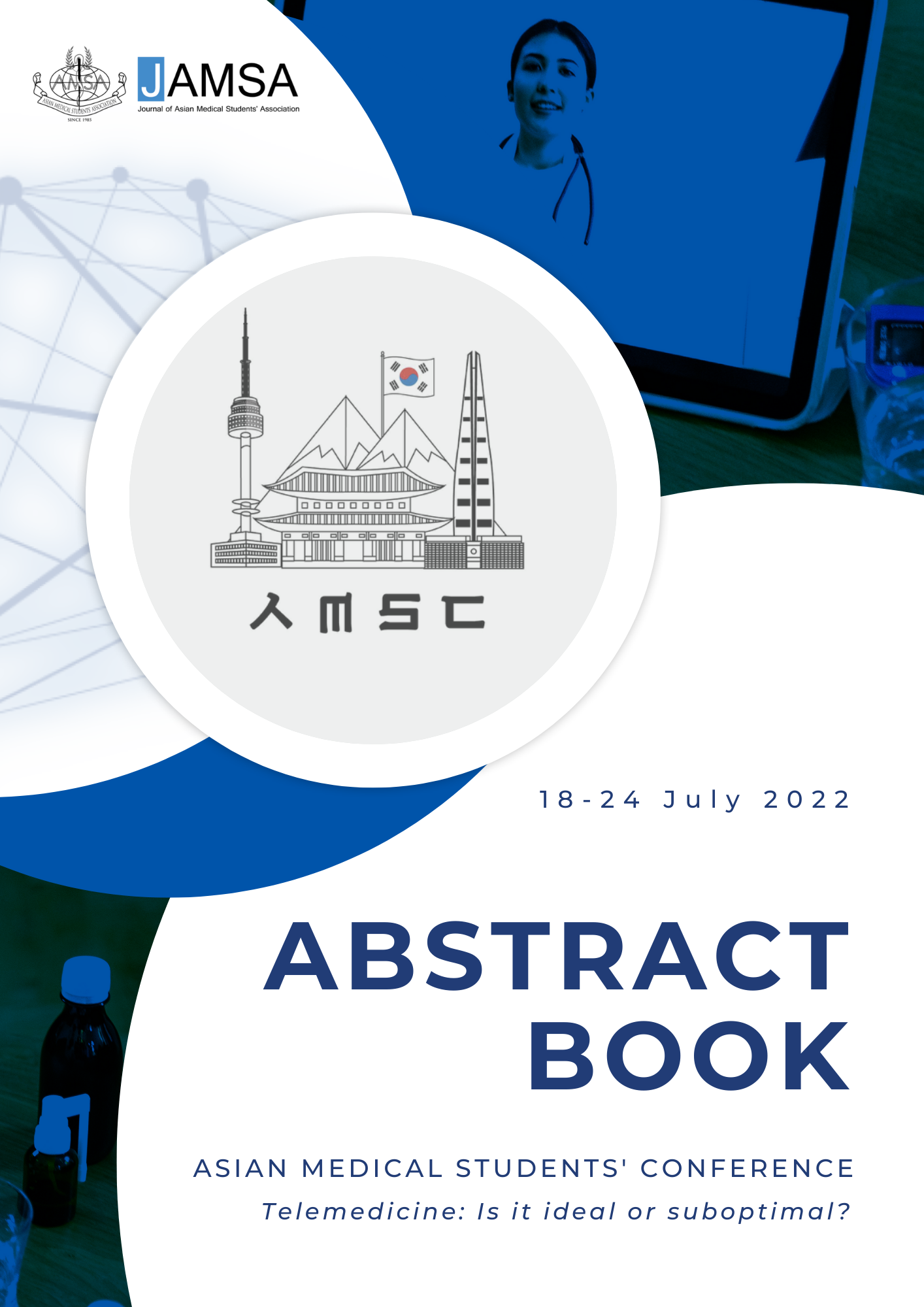Advancement of telemedicine due to wearable device
Main Article Content
Abstract
A.introduction
Telemedicine was applied to medicine to overcome barrier of distance limit, but medical information that could be obtained only through a simple phone call or video call was limited. However, with the development of IT technology, and semiconductors, medical devices have been miniaturized. Therefore, medical devices appeared in the form of wearables. So, we would like to investigate how the development of these medical devices has affected telemedicine.
B.objective
How wearable devices developed telemedicine was divided into three major contents. First, the EKG and PPG used in cardiology was investigated. Second, the measurement and monitoring of vital signs were investigated. Lastly, we investigated artificial intelligence.
C.Method
A Research direction was set to “Advancement of telemedicine due to wearable device" and nine people conducted literature survey. The inclusion criteria were set as telemedicine, wearable device, IOT, advancement, outcome.
D.Result
First, wearable devices are used to determine the presence or absence of cardiovascular disease by measuring continuous data. Second, Wearable devices aim to predict and evaluate underlying health conditions, enabling continuous and ambulatory measurement of vital signs including blood pressure, heart rate, respiratory rate, body temperature, and blood oxygen saturation, which are valuable clues to be monitored in order to identify clinical deterioration. Finally, as telemedicine is developed, a flood of data was applied in medical area. Artificial intelligence medical devices using medical data can significantly reduce misdiagnosis and the problem due to lack of supply of specialists.
E.Conclusion
Wearable devices made physicians to receive objective data and continuous measurements. Patients also receive quality care without going hospital and are not affected by external factors such as whitegown syndrome. However, it is necessary to consider who should be responsible for the misdiagnosis, and more research should be done to minimize the error.
Article Details

This work is licensed under a Creative Commons Attribution-NonCommercial-ShareAlike 4.0 International License.
© Journal of Asian Medical Students’ Association (JAMSA). Released under a Creative Commons license.
References
Greiwe, J., Nyenhuis, S.M. Wearable Technology and How This Can Be Implemented into Clinical Practice. Curr Allergy Asthma Rep 20, 36 (2020). https://doi.org/10.1007/s11882-020-00927-3
Dias, Duarte, and João Paulo Silva Cunha. “Wearable Health Devices-Vital Sign Monitoring, Systems and Technologies.” Sensors (Basel, Switzerland) vol. 18,8 2414. 25 Jul. 2018, doi:10.3390/s18082414
Liu, Jihong et al. “Recent Progress in Flexible Wearable Sensors for Vital Sign Monitoring.” Sensors (Basel, Switzerland) vol. 20,14 4009. 19 Jul. 2020, doi:10.3390/s20144009
Greiwe, J., Nyenhuis, S.M. Wearable Technology and How This Can Be Implemented into Clinical Practice. Curr Allergy Asthma Rep 20, 36 (2020). https://doi.org/10.1007/s11882-020-00927-3
Steinhubl, S.R., Topol, E.J. A skin patch for sensing blood pressures. Nat Biomed Eng 2, 633–634 (2018).

